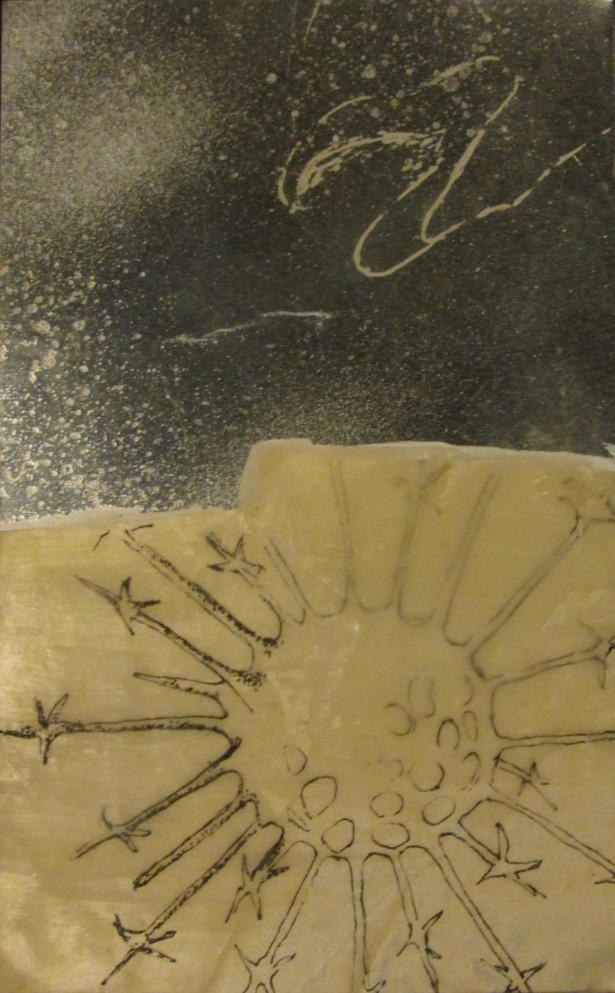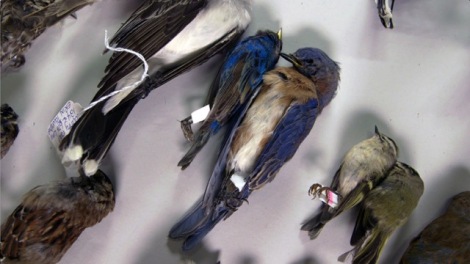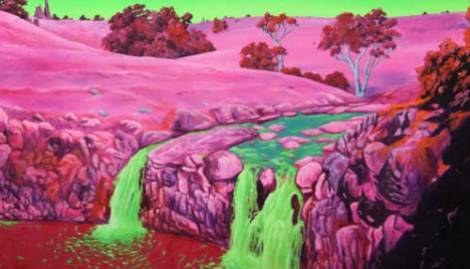This post comes from the Artists and Climate Change Blog
by Guest Blogger Katie Craney
I live on the edge of the earth’s largest contiguous temperate rainforest that connects with over 25 million acres of federally protected wild land. Annual precipitation ranges from 25 to 140 inches along this coastal panhandle. It is here that water defines our identity, our way of life, our values, and our survival. Some would argue it is salmon that defines Southeast Alaska as the bounty of nutrient-rich tidal inlets and glacier-fed rivers and streams have provided ample human habitation for thousands of years. Sacred Tlingit song and dance about salmon abundance and return has been passed down for hundreds of years. Salmon fill our freezers and shelves, fuel our regional economy and culture, feed our families and the bears which ultimately feed the forest to complete an inexhaustible cycle of nutrients.
As an artist in Alaska, salmon seem an obvious theme to base research on. As I began sifting through the ecological significance of salmon for my own survival, I took a step back to see the larger picture of what ocean processes are needed for salmon to thrive in this environment – all of which can be summed up in two words: marine plants. Specifically plankton, the microscopic ocean drifters that create a biological pump in our oceans and are indicators of how anthropogenic climate change and ocean acidification will continue to alter the nature of our planet.
As a gardener I’ve learned the importance of maintaining proper pH levels in the soil to grow my own food. I can add nutrients, including fish fertilizer, what we call ‘fish juice,’ and organic matter to create the appropriate balance between acidic and alkaline soils. Some plants, such as blueberries and potatoes require more acidic soil, a soil with lower pH levels. Other varieties, like arugula or beets, can tolerate higher pH. The beauty of my garden is I have easy control of nutrient levels and can, in a reasonable timeframe, change the overall soil composition.
That’s not the case for maintaining a basic level of pH in the ocean. The ocean acts as a sponge and has absorbed about one-third of human-caused carbon dioxide emissions from the atmosphere. This absorption causes chemical reactions to occur, ultimately dropping the pH level, leading to “ocean acidification.†With this environment the lowered pH impacts the smallest members in the food chain – chlorophyll producing marine plants such as phytoplankton and the organisms that feed on those plants to secure the life cycle stasis of Alaska’s beloved wild salmon and so much more.
Plankton fall into two main categories: phytoplankton (plants) and zooplankton (animals.) Research suggests that due to their photosynthesis, phytoplankton provide up to 75% of the earths atmospheric oxygen, providing a significant amount of the oxygen we breathe. Not only do these tiny organisms allow humans to survive at the most basic level, they are the basis of the entire marine food chain. The balance necessary for these plants to exit should be applauded, honored, and respected.
Another factor in marine chemistry is glacier runoff. At the speed of current glacier melt, nitrates and iron levels flushed into marine waters will increase, can harm the productivity of plankton, and have a rippling effect through the food chain from salmon to sea birds and beyond. As ocean temperatures rise, surface waters where plankton drift will see reduced nutrient levels. This is especially important for plankton survival during the winter months. Think about how a bear hibernates over winter – plankton do the same by slowing down their metabolism and go a long time without eating, however, as surface temperatures warm earlier in the winter season, plankton burn through their fat reserves before regular food sources become available.
* Â * Â * Â * Â *
*Ongoing research will continue to develop and help us comprehend the breadth of plankton’s role in our every day life. This is only a brief description of how I have come to understand and observe changes at a basic level.
* Â * Â * Â * Â *
The more I learn about the significance of the ecosystem that surrounds me, the more I want to shout from the rooftops that it’s not too late! We can learn and change and encourage responsible clean energy and development while taking care of the 7.5 billion+ people on the planet. Right? I think so. I hope so. Through artmaking, I embrace an ecological perspective towards the biggest challenge we face and hope to encourage others to do the same. By creating a visual statement of what is at stake, I hope viewers of my work will take the time to ask questions and learn that we are all connected and in this together.
The small vignettes I create are my way of interpreting the complicated, long-term social and ecological nature of climate change. By working with wax on small pieces of metal and wood I explore the contrast between the malleability of the wax and the rigidity of the metal, which is symbolic to human – animal relationships within an ecosystem. Working with reflective metal allows for the viewer to be directly included in the composition to challenge boundary lines, barriers, and misunderstandings of how Alaska is changing.
 When there are moments of discouraging news I recall Aldo Leopold’s philosophy that the things we understand, can see, feel, love, or have faith in, will determine how we treat the land. For me, the place I call home is all encompassing and easy to love and treat respectfully. Though my art I hope others sense this passion and engage in conversations in their own communities to bring change. My friend Kim Heacox said it best in his book The Only Kayak: A Journey Into The Heart of Alaska, “We must pass through the prism of our own destruction to see a new and better light.â€
When there are moments of discouraging news I recall Aldo Leopold’s philosophy that the things we understand, can see, feel, love, or have faith in, will determine how we treat the land. For me, the place I call home is all encompassing and easy to love and treat respectfully. Though my art I hope others sense this passion and engage in conversations in their own communities to bring change. My friend Kim Heacox said it best in his book The Only Kayak: A Journey Into The Heart of Alaska, “We must pass through the prism of our own destruction to see a new and better light.â€
______________________________
Inspired by the mountains, glaciers, rivers, and ocean that surround her, Katie Craney’s work reflects the juxtaposition of natural and human landscapes and her understanding of what it means to rely on the land for survival. Craney’s work can be found in the Museums Alaska permanent collection and is currently exhibited at the John Michael Kohler Arts Center in Sheboygan, Wisconsin, and at the Museum of Art & History in Lancaster, California.
———-
Artists and Climate Change is a blog that tracks artistic responses from all disciplines to the problem of climate change. It is both a study about what is being done, and a resource for anyone interested in the subject. Art has the power to reframe the conversation about our environmental crisis so it is inclusive, constructive, and conducive to action. Art can, and should, shape our values and behavior so we are better equipped to face the formidable challenge in front of us.
Go to the Artists and Climate Change Blog
Powered by WPeMatico






















 Where did the idea for Fossilized in Houston come from?
Where did the idea for Fossilized in Houston come from?





